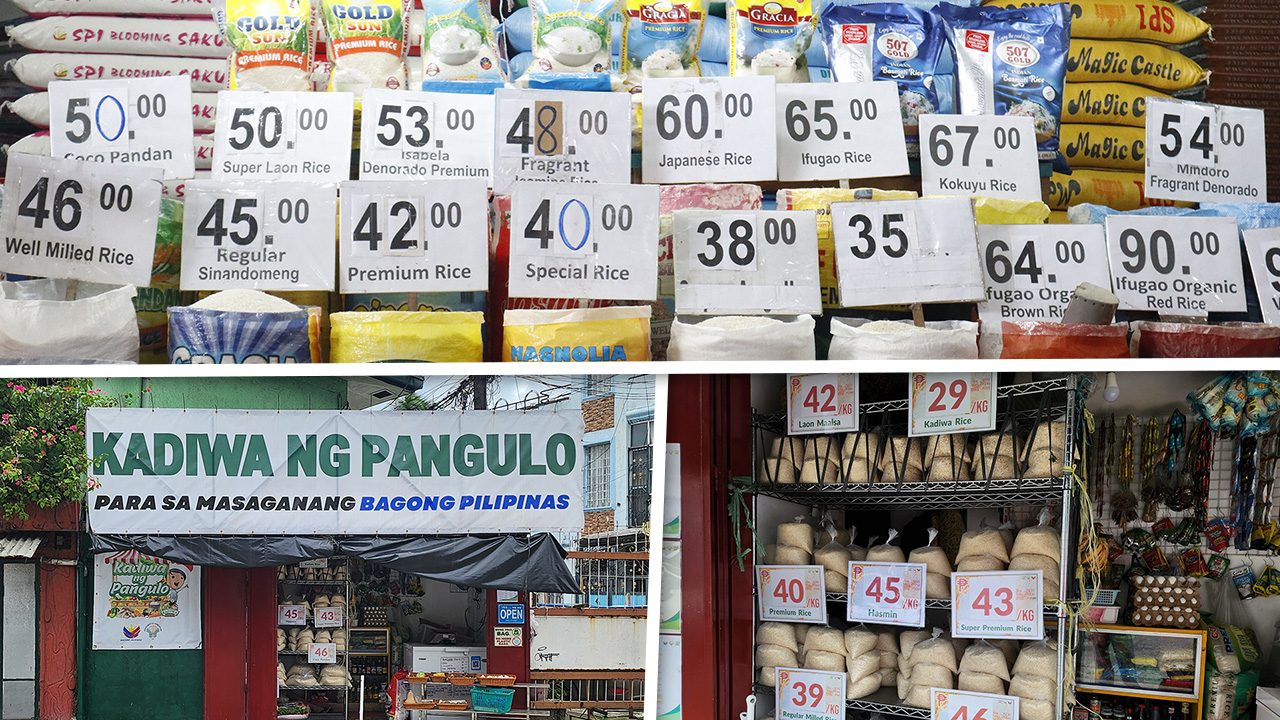Physical Address
304 North Cardinal St.
Dorchester Center, MA 02124
Physical Address
304 North Cardinal St.
Dorchester Center, MA 02124

MANILA, Philippines – In his fourth State of the Nation Address (SONA), President Ferdinand Marcos Jr. reaffirmed his 2022 presidential campaign promise to lower the price of rice to P20 per kilo.
“Napatunayan natin na kaya na natin ang P20 bawat kilo ng bigas nang hindi nalulugi ang mga magsasaka,” Marcos said in his SONA on Monday, July 28.
(We have proven that we can [distribute] P20 per kilo of rice without putting farmers at a disadvantage.)
The Department of Agriculture kickstarted the rice program which was pilot tested in Cebu early this year. Shortly after, the DA announced its availability in Kadiwa sites. The initiative is backed by the National Food Authority’s (NFA) buffer stock, using fresh and wet palay sourced directly from local farmers.
The program is already being implemented in various regions through Kadiwa ng Pangulo centers in provinces including Pangasinan, Cavite, Occidental Mindoro, Cebu, Bacolod, Guimaras, Siquijor, and Davao del Sur, as Marcos had said in his 2025 SONA.
Marcos also mentioned that the government has allocated P13 billion to support the program’s operations, with the goal of expanding it to more Kadiwa stores and local government units across the country.
The government aims to establish 1,500 Kadiwa ng Pangulo stores nationwide by 2028, with plans to further expand in Metro Manila and other parts of the country.
To date, there are at least 23 stores operating across Metro Manila, with 57 more set to open soon, according to Agriculture Assistant Secretary for Agribusiness, Marketing, and Consumer Affairs Genevieve Velicaria-Guevarra.
A Pasig City Kadiwa outlet sells rice at lower prices compared to public markets.

Pasig-based Kadiwa vendor Fatima Ocampo, 32, said that while the P20-per-kilo rice is being offered in some locations, it is not available in her store. But many people continue to buy from her store because the rice is cheaper compared to what is sold at the market.
The cheapest rice in the Pasig Kadiwa store is P29 per kilo, but is often of poor quality — typically rice that has been overexposed to the sun and, at times, shows signs of insect infestation.
For her, the P20 rice remains a campaign promise. It can only become a reality if the government gives direct subsidies and ensures quality control over the rice being sold.
“Siyempre, sa mga tao, pangako [lang],” she said when asked if this promise was realistic. “Dapat yung bigas nila, mura na, ‘yung puwede naman kainin ng tao.”
(Of course, it’s just a promise for the people. Their rice should not only be cheap but also good enough human consumption.)
Pasig resident Mhel Sampaga, 40, said regularly buying rice from Kadiwa stores helps save money. Sampaga already visited other Kadiwa outlets where the P20 rice is available, but noted that it is not widely purchased due to its poor quality.
He also recalled similar programs under the previous administrations, sometimes offering even lower prices. “Parang ‘gaya ng dati, ‘di ba? Mga dating nagdaan na administrasyon. Mas mura ‘yung mga dati.” (It’s like before, right? The past administrations. It was cheaper before.)
Sampaga said Kadiwa stores could maintain consistently low rice prices, especially if more people continue to support the program in Metro Manila. However, expanding it to other areas may be challenging, as vendors and distributors often face losses which, in turn, affects the quality of rice being sold.
For 60-year old retiree Norme Galit, the best option at the Kadiwa is the “coco pandan” rice variety priced at P46 per kilo. The price has also gone down slightly, as earlier this year, the same variety used to be sold at P48.
Galit is not sure if rice prices will really go down, and if it can be sustained to expand in other areas in the country. “Hindi ako naniniwala eh kasi ang hirap kontrolin ng mga negosyante,” she said. (I don’t believe it because it’s hard to control businessmen.)

Taytay resident and motorcycle taxi driver Marlon Villano Robles, 55, shared that while he regularly searches for affordable rice in his area, he no longer expects the P20-rice initiative to reach his town or nearby locations. For him, such programs are typically implemented in low-income and remote communities.
He also believed it’s unlikely to be implemented in traditional markets, where rice prices are driven by the long supply chain and added costs from middlemen.
According to farmers’ collective Samahang Industriya ng Agrikultura (SINAG) in a Philstar report, retail prices of rice could drop to as low as P43 per kilo if the government reduces the number of intermediaries involved before the commodity reaches consumers.
Rice typically goes through at least six layers of middlemen, such as wholesalers and transporters, with each adding about P2 per kilo to the final retail price. SINAG said that even without reducing tariffs, streamlining the supply chain could significantly lower rice prices and make the staple more affordable.
For some residents and consumers around the Pasig City Kadiwa store, the program feels more like a political talking point than a practical solution, especially when the rice being offered is either of low quality or simply unavailable.

While they recognize the government’s intent to make rice affordable, they believe that quality should not be compromised.
As Ocampo put it, “Marami pa rin talaga ang mga tao na naghahanap ng murang bigas.” (There are still many who are really looking for cheap rice.) – with reports from Ice Matienzo/Rappler.com
Ice Matienzo is a Rappler intern from the De La Salle University-Manila. He is a senior student pursuing a degree in Philippine Studies, majoring in Mass Media.